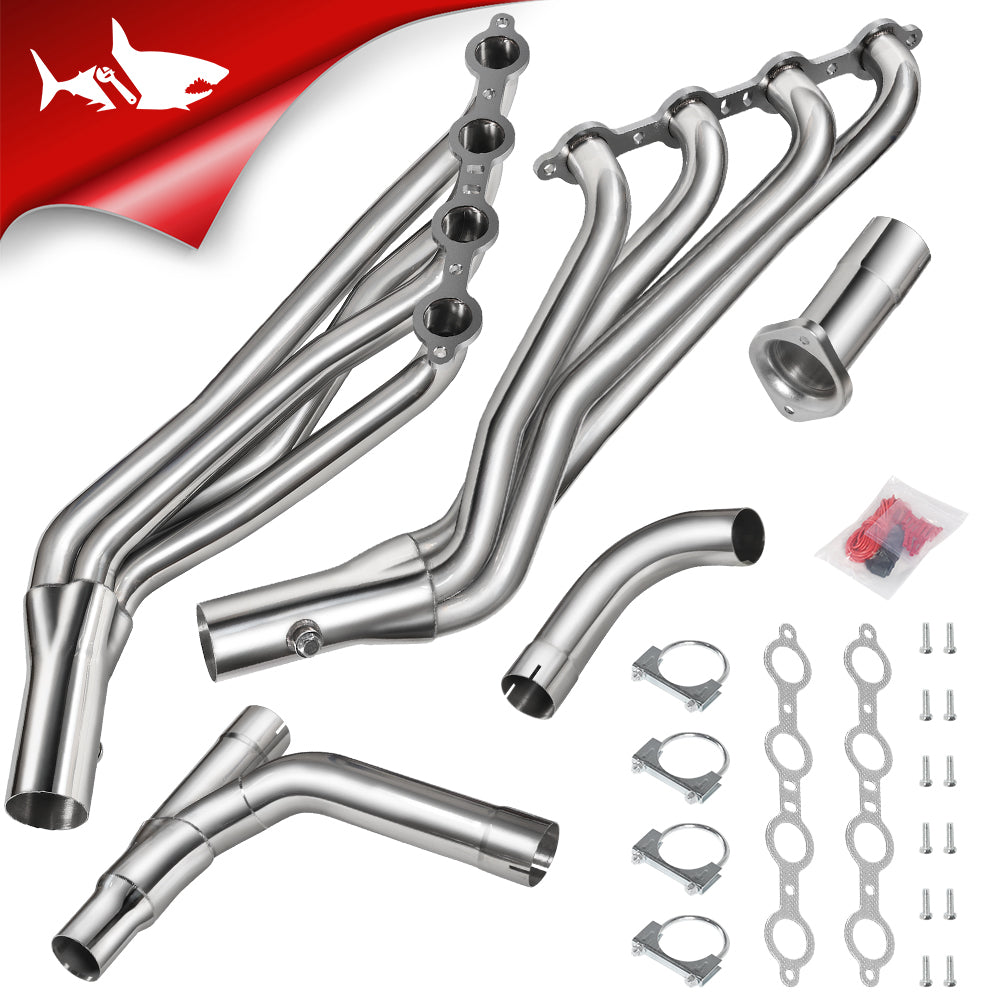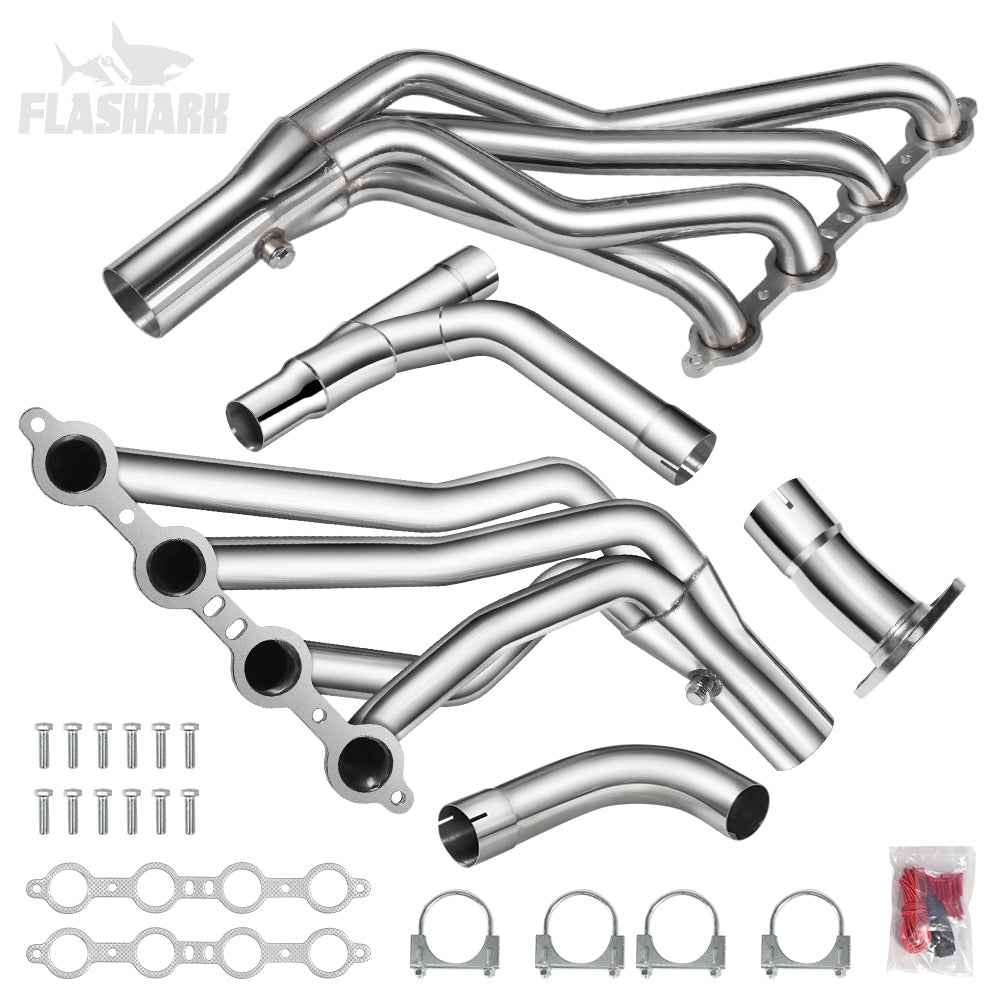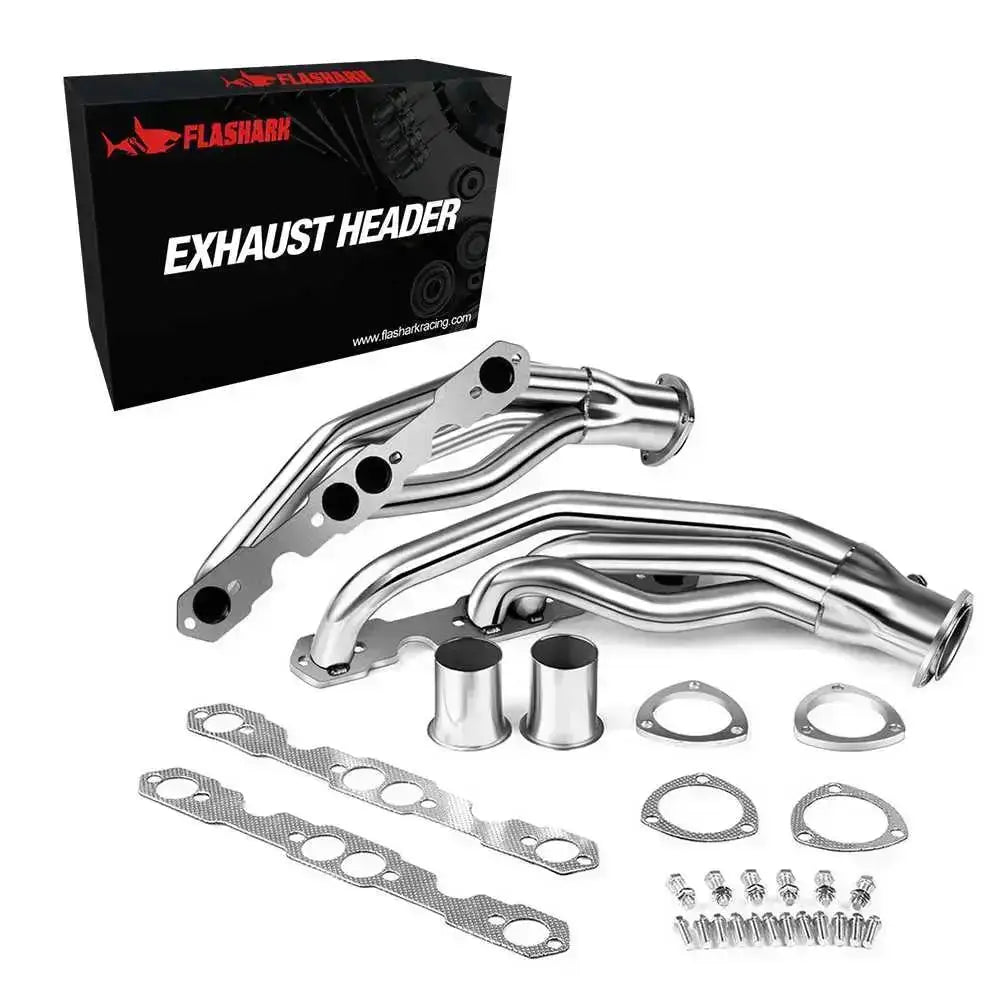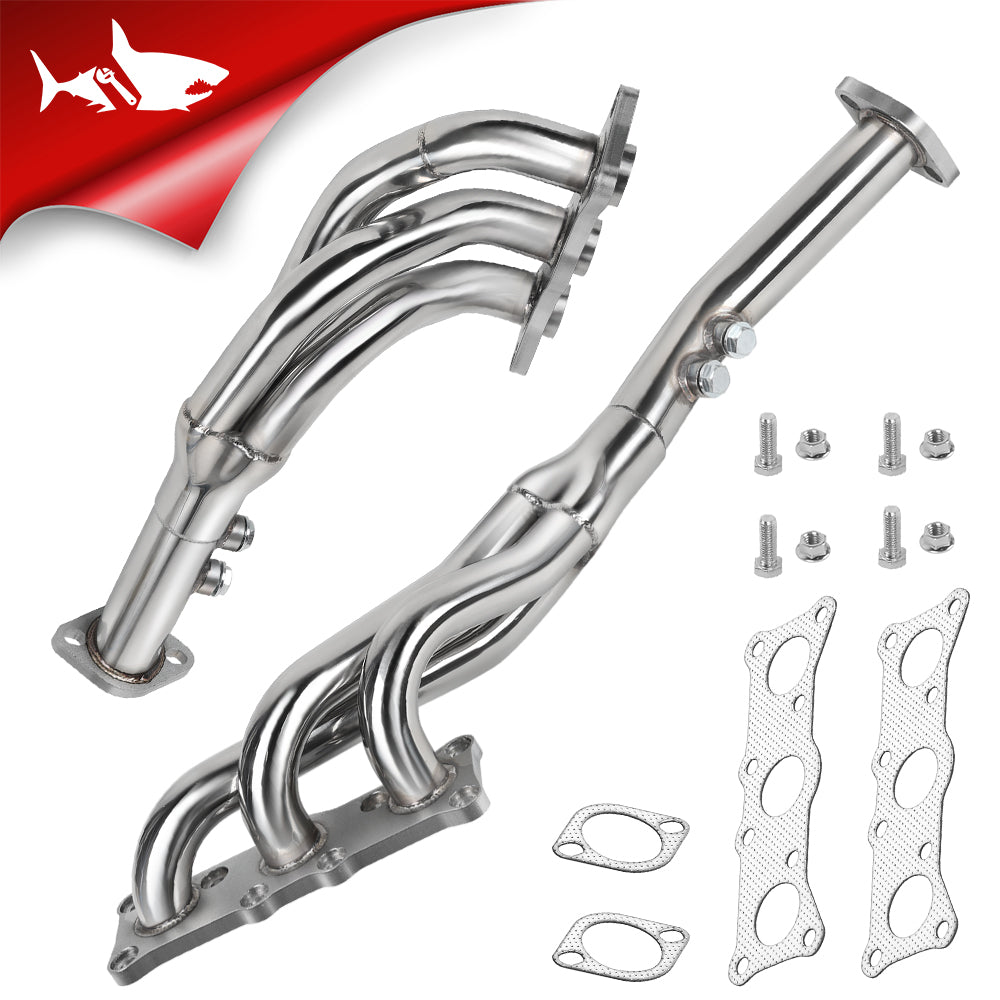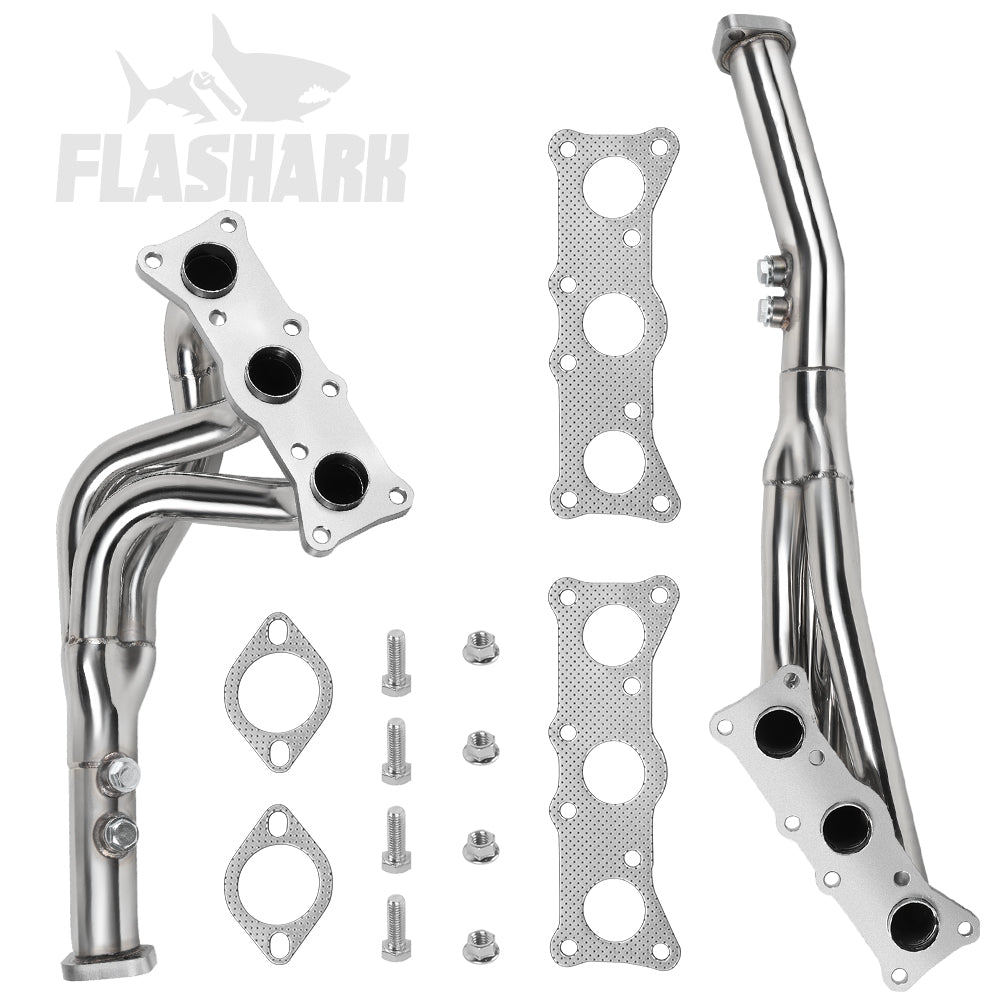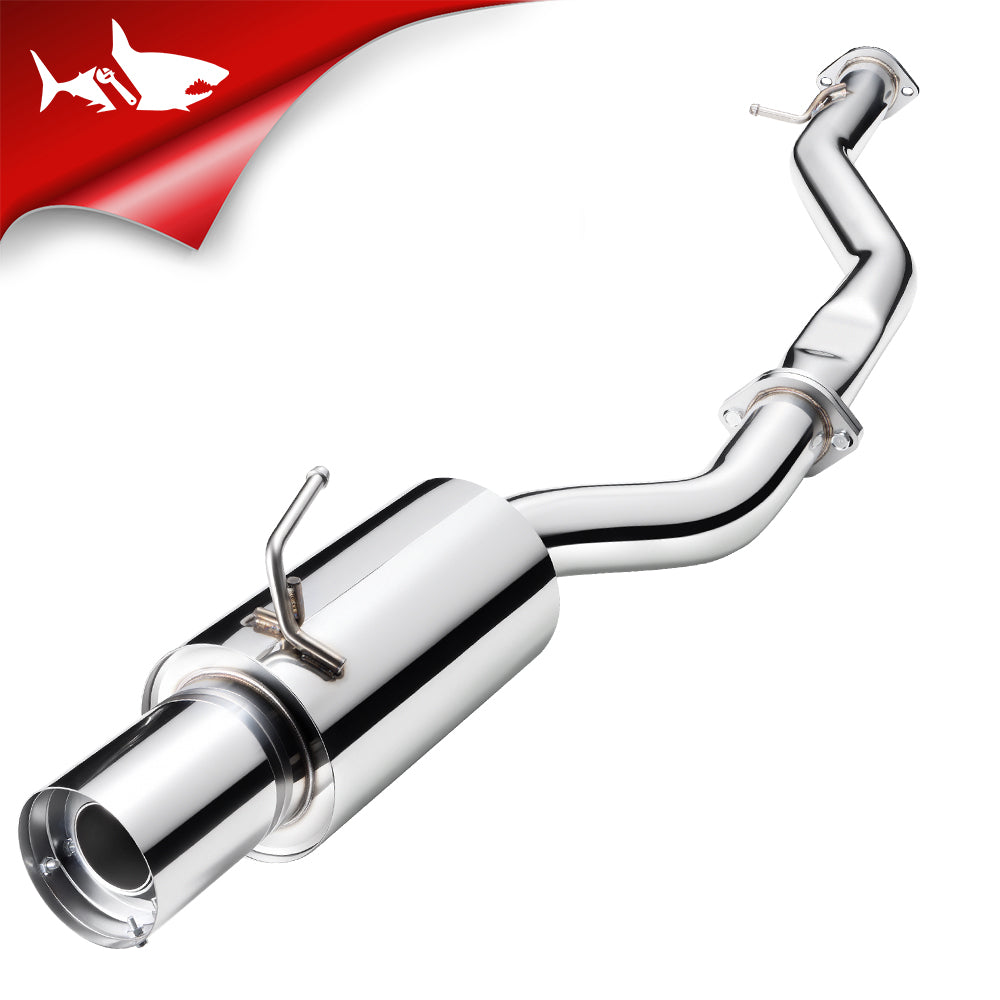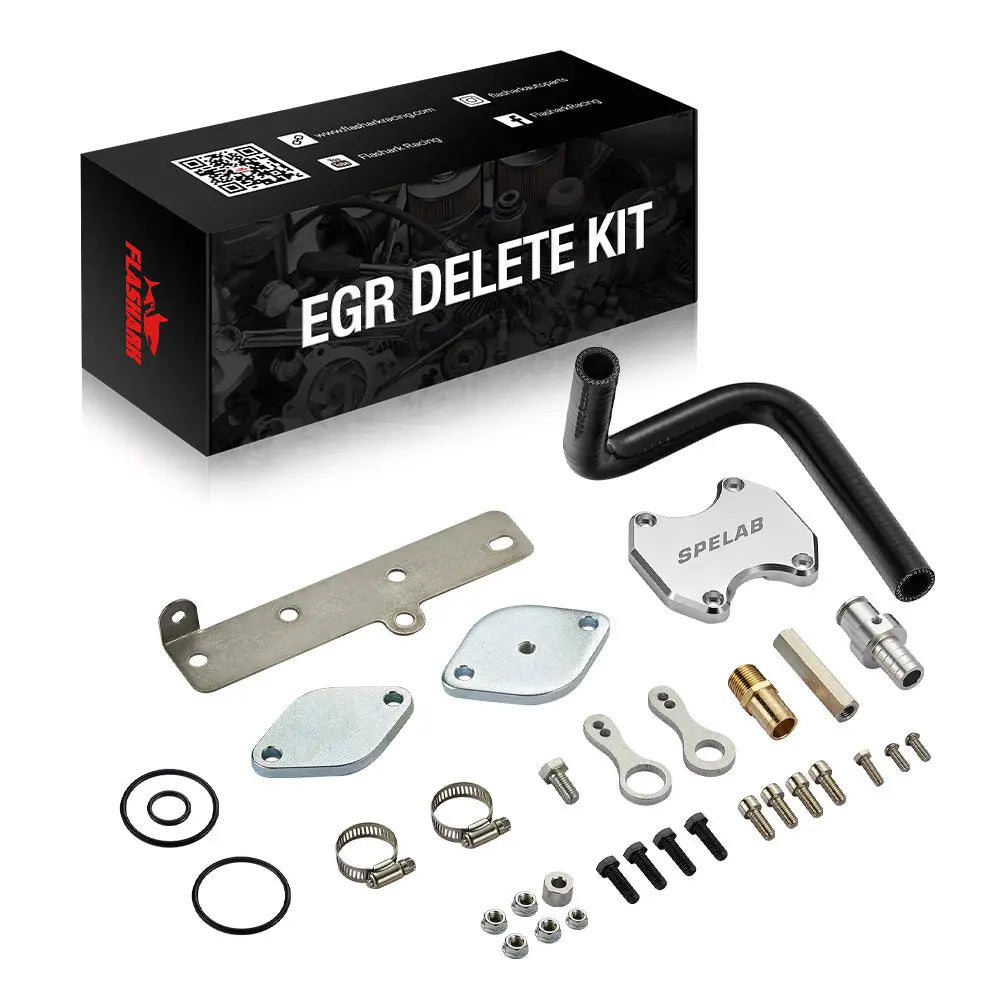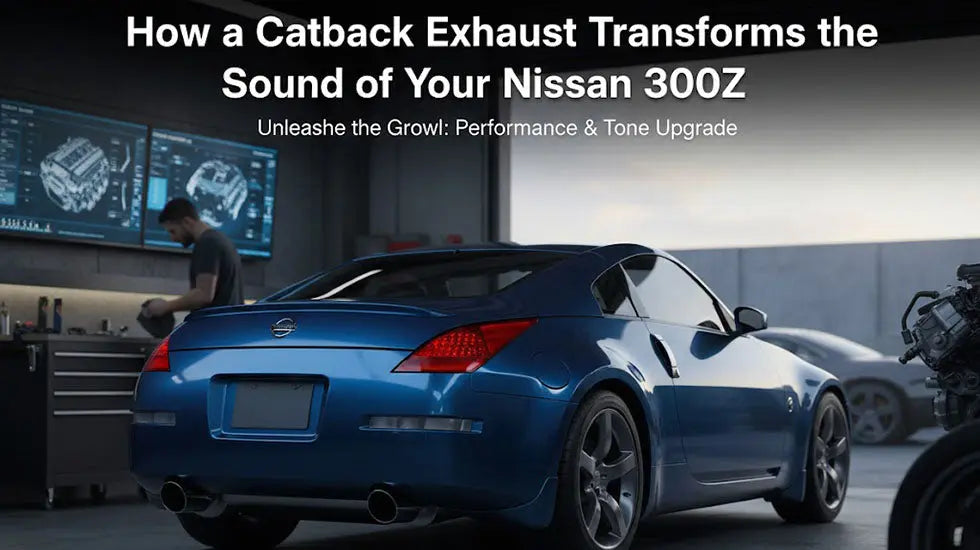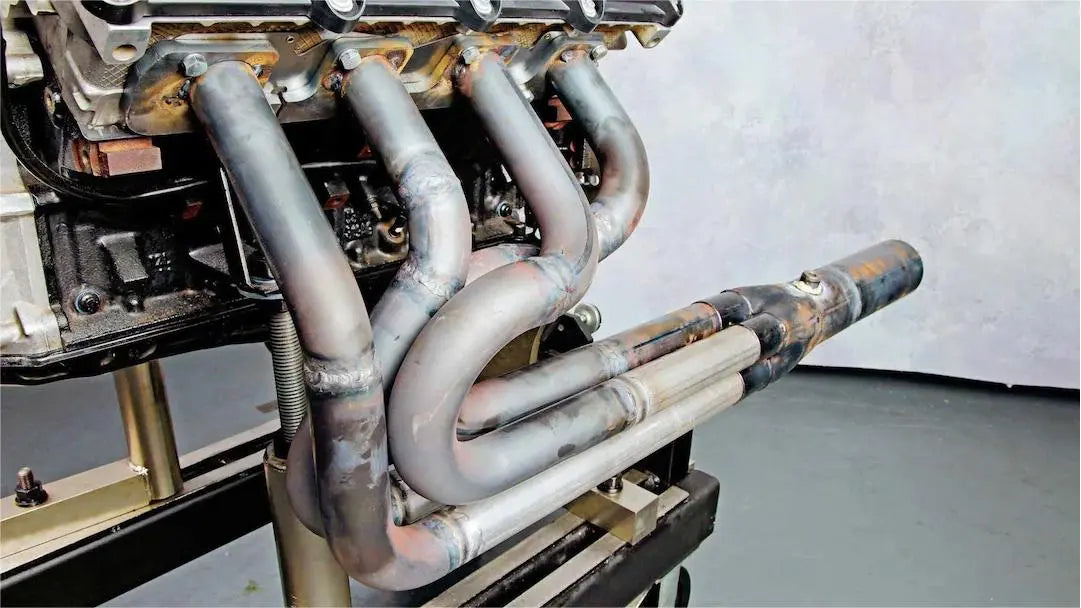Car headers are a crucial component in a car's exhaust system, significantly impacting its overall performance. They collect exhaust gases from multiple cylinders and channel them into one pipe. Headers play a pivotal role in enhancing the engine's power and efficiency by efficiently managing these gases.
Exploring Various Header Styles and Their Effects
Different header designs come with their own unique benefits, catering to various performance needs. For instance, shorty headers are preferred for a subtle increase in power, especially in tight engine spaces. Long tube headers are ideal for high-performance applications, offering significant horsepower gains.
The choice of header design also affects the sound of the car. Shorty headers often maintain a more stock-like sound, while long tube headers can give the car a more aggressive exhaust note. This is something to consider if the sound character of the car is important to you.
Materials used in headers, such as stainless steel or ceramic-coated, also play a role. Stainless steel headers are durable and resist corrosion, while ceramic-coated ones are excellent for heat management. This choice can influence not just performance but also the longevity of the headers.
RX8 Header styles are particularly interesting. These headers are designed specifically for the Mazda RX-8's unique rotary engine, optimizing exhaust flow and improving engine response. They are a prime example of how specialized headers can complement specific engine types.
Installation complexity varies with different header types. Long tube headers might require more modifications to fit, whereas shorty headers are generally easier to install. It's important to consider your mechanical skill level or budget for professional installation.

How Headers Enhance Your Car's Engine
Headers are engineered to optimize the exhaust gas flow from the engine. This is achieved by reducing back pressure, which is essentially the exhaust system's resistance against the engine's exhaust gases. Less back pressure means the engine can expel exhaust gases more freely, leading to more efficient operation.
A key aspect of headers is their design, which allows for smoother and quicker exit of exhaust gases from the engine cylinders. Each cylinder gets its own exhaust pipe in a header, unlike a traditional exhaust manifold. This individual attention to each cylinder ensures a more balanced and efficient exhaust expulsion.
The improved exhaust flow due to headers directly impacts the engine's ability to 'breathe.' An engine that breathes better can draw in more air and fuel, which is crucial for generating more power. This is where you notice an uptick in your car's performance and responsiveness.
Headers also contribute to better thermal efficiency. By efficiently managing the heat from the exhaust gases, they prevent excessive heat buildup in the engine bay. This helps maintain optimal engine temperatures, vital for prolonged engine health and performance.

Headers vs. Exhaust: A Key Performance Debate
While headers and the exhaust system are both crucial components of a car's exhaust setup, they serve different roles in performance enhancement.
Difference Between Headers and Exhaust Systems
- Headers primarily focus on improving exhaust gas flow from the engine cylinders, reducing back pressure, and optimizing engine breathing. They enhance the engine’s power and responsiveness, especially at higher RPMs.
- Exhaust systems, on the other hand, include all components that guide exhaust gases from the engine out of the vehicle, such as catalytic converters, mufflers, and tailpipes. While exhaust systems help with emissions, sound control, and general efficiency, they do not have the same direct impact on engine power as headers do.
How Headers Can Improve Engine Power
As discussed earlier, headers help the engine "breathe" better, improving the combustion process by allowing gases to exit the engine more easily. This means that headers are essential for improving horsepower, particularly for high-performance or modified vehicles.
On the other hand, while exhaust systems are important for regulating back pressure, they do not typically offer substantial gains in horsepower when compared to headers.
Installing Headers: A DIY Approach
Installing headers can be a rewarding DIY project, enhancing your car's performance. Before starting, gather all necessary tools and ensure you have the right header model for your vehicle. Matching the headers to your car's make and model is crucial for a seamless fit.
Begin by disconnecting the battery, a safety step to prevent any electrical issues. Then, remove the old exhaust manifold. This might require some effort, as bolts can be tight or corroded. Use penetrating oil to ease the process.
With the old manifold out, carefully align the new headers. It's essential to get a snug fit. Tighten the bolts in a cross pattern to ensure even pressure and avoid warping.
Once the headers are secured, reconnect the exhaust system. Double-check all connections and bolts for tightness. A loose connection can lead to exhaust leaks, which are counterproductive.
After installation, it's wise to check for any leaks. Start the engine and listen for unusual sounds or hissing, indicating a leak. If you find one, tighten the necessary bolts or consult a professional.
Keeping Your Headers in Top Shape
Regular maintenance is key to ensuring your headers last as long as your car does. Start with routine visual inspections. Look for signs of rust, cracks, or loose bolts, which are common header issues over time.
Cleaning your headers is also essential, especially if they're stainless steel or chrome. Use appropriate cleaners and a soft cloth to avoid scratching. This keeps them looking good and helps in early detection of potential problems.
Listen to your car. Unusual sounds from the exhaust system could indicate a leak or a loose header. If you hear anything out of the ordinary, it's time for a closer inspection or a visit to a professional.
If your headers are ceramic-coated, be mindful of their temperature handling. These coatings can crack under extreme temperature changes. Avoid high-pressure washing on hot headers, as the sudden temperature change can damage the coating.
Extra care is needed for those living in areas with harsh winters or salty roads. Salt can accelerate corrosion. Regular washes during these months can help prevent rust and prolong the life of your headers.
Tightening header bolts periodically is a simple yet effective way to prevent leaks. As engines heat and cool, expansion and contraction can loosen these bolts. If needed, a quick check and tightening can save you from bigger issues later.
In case of any significant issues, like a crack, consider getting professional help. While some might opt for welding repairs, sometimes replacement is the more reliable choice.
Conclusion
Now that you know what is car headers, you can better understand their impact on your vehicle. This knowledge empowers you to make informed decisions about upgrades and maintenance, ensuring your car performs at its best. Armed with this information, the journey from understanding what headers are on a car to enhancing your vehicle's performance becomes a more accessible and rewarding experience.



